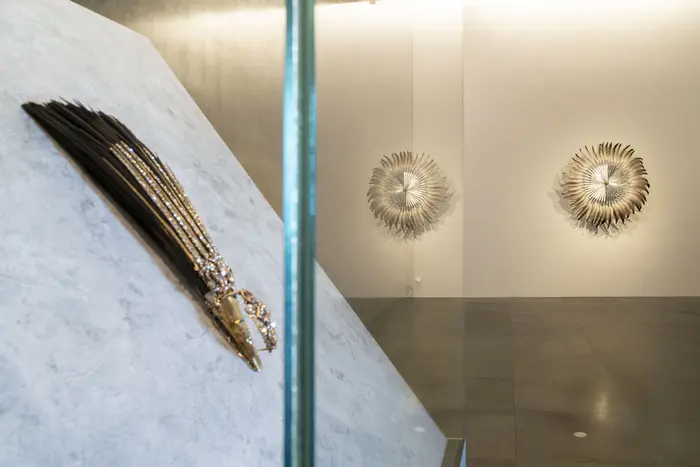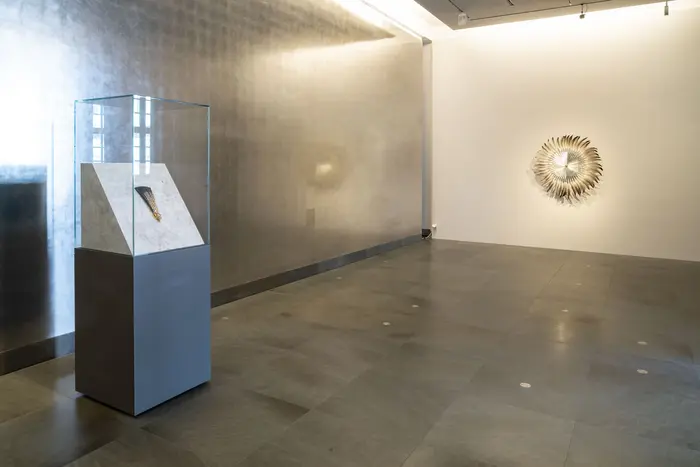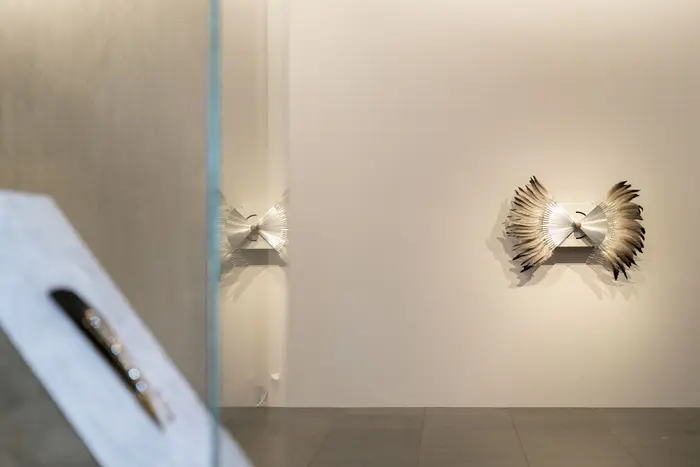Im Sponsel-Raum des Neuen Grünen Gewölbes
In the Sponsel room at the Neues Grünes Gewölbe, the work is juxtaposed with a historical hat ornament from the treasury of Augustus the Strong, which very similarly revolves around the feather as a symbol of embellishment and elegance. In its upward projection, the piece of jewellery from the Baroque period, featuring exquisitely arranged natural feathers and contrasting feathers in gold and diamonds, is both exceptionally delicate and decorative. In ceremonies, it was the prerogative of the ruler to keep his hat on, and the precious hat ornament in a sense replaced the crown. This is expressive of a phenomenon that speaks equally through both works: the aesthetic self-presentation that is inherent in nearly all forms of life—from the courtship dances of birds that so clearly come to mind here to the blossoming of plants to the precious objects produced by human cultures. What seems at first glance to be an expression of pure beauty, an end in itself, becomes upon re-examination inseparable from forms of representation for the purpose of demonstrating power.












